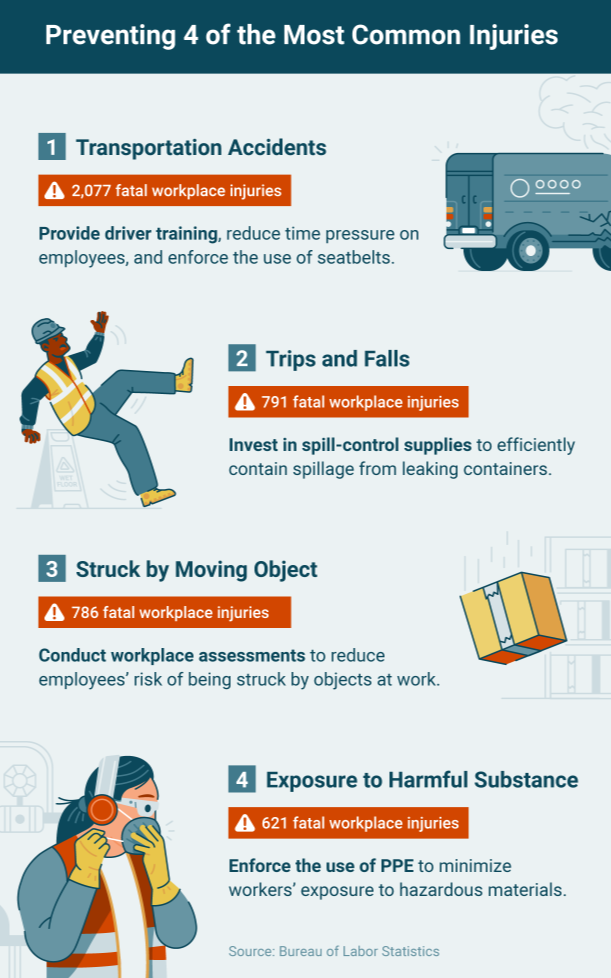Accidents can happen in any workplace environment and any industry, and it’s almost impossible to predict when they can occur. However, what employers can do to ensure each employee’s safety is by taking preventative measures, using the correct safety tools for your business, and providing sufficient employee training in advance. Ultimately, employees are every business’s greatest assets and should be the number one priority.
Here are some of the most common workplace accidents to be aware of as well as tips to prevent them from happening at your workplace
Slips, Trips, and Falls
Slips, trips, and falls are some of the leading causes of workplace injuries in the United States. According to the Bureau Labor of Statistics, more than 200,000 cases of non-fatal injuries in 2017 and 2018 were caused by employees slipping, tripping, or falling.
Prevention tip: To avoid these types of accidents in the workplace, make sure to quickly contain spillage, avoid messy work environments, and even out any bumps or uneven surfaces.
Overexertion
Overexertion can happen to employees in any industry. Typically, overexertion is caused by employees attempting to move, lift, push, or pull objects that are significantly heavier than the weight they can physically handle. Though most overexertion injuries are non-fatal, they can still have long-term effects on employees. For example, severe muscle strain that may require physical therapy.
Prevention tip: Encourage employees to ask for help when needed. Also, make sure that each employee understands the proper technique of handling heavy objects.
Fire and Explosions
Fire and explosions in the workplace can have detrimental consequences on not just the company, but employees’ safety as well. Industries most susceptible to these types of accidents are manufacturing, food production, and the chemical industry due to combustible materials and explosive chemicals present in the workplace.
Prevention tip: Routinely tidy up the workplace to avoid buildup of combustible dust and materials. Also, enforce the use of designated smoking areas to prevent fire hazards.












